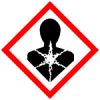Coalition status
Fairtrade Yellow
This list contains 110 pesticides. The list is valid as of January 2018.
Pesticides which are flagged as being hazardous and should be only used with…
FSC restricted HHPsChemical pesticide presenting one out of three of the following hazards: acute toxicity, chronic toxicity and environmental toxicity.
GCP-Phase-Out 2026Use of pesticides in the Phase-out List are reduced through use of Integrated Pest Management and phased out by 2030, if feasible. This includes…
UEBT ProhibitedThe use of Prohibited Agrochemicals is prohibited for certified, prioritised and verified ingredients, because they are considered Highly Hazardous…
Details
Type: Pesticide
Use: Fungicide
Example applications: Vegetables including carrots;Lettuce;Ornamentals;Fruit including apples, pears, plums, apricots and peaches;Root crops;Cotton;Sunflowers;Turf
Example pests controlled: Botrytis, Minilia, Rhizoctonia, Sclerotinia - damping-off
Mode of action: Contact action with protectant and some eradicant activity. Signal transduction inhibitor.
Source: PPDB
Toxicty
EPA: Probable Human Carcinogen
Agents with sufficient evidence (i.e., indicative of a causal relationship) from animal bioassay data, but either limited human evidence (i.e.,…
GHS carcinogen
Category 1A: the assessment is based primarily on human evidence
Identifiers
GHS safety labels
About Globally Harmonized System of Classification and Labelling of Chemicals (GHS)
From Wikipedia: The Globally Harmonized System of Classification and Labelling of Chemicals (GHS) is an internationally agreed-upon standard managed by the United Nations that was set up to replace the assortment of hazardous material classification and labelling schemes previously used around the world. Core elements of the GHS include standardized hazard testing criteria, universal warning pictograms, and harmonized safety data sheets which provide users of dangerous goods with a host of information. The system acts as a complement to the UN Numbered system of regulated hazardous material transport. Implementation is managed through the UN Secretariat. Although adoption has taken time, as of 2017, the system has been enacted to significant extents in most major countries of the world.[1] This includes the European Union, which has implemented the United Nations' GHS into EU law as the CLP Regulation, and United States Occupational Safety and Health Administration standards.
- H351

Suspected of causing cancer (state route of exposure if it is conclusively proven that no other routes of exposure cause the hazard)
Class: Carcinogenicity - H400

Very toxic to aquatic life
Class: Aquatic
Subclass: Acute - H410

Very toxic to aquatic life with long lasting effects
Class: Aquatic
Subclass: Chronic
